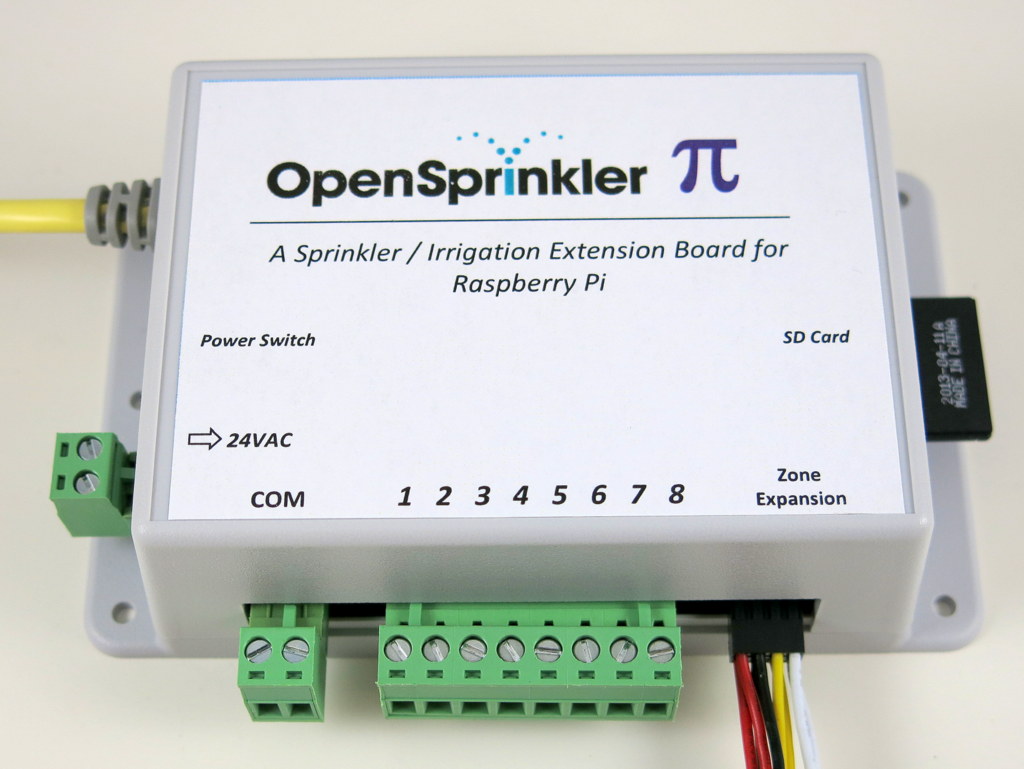

Unscrew the bleed screw in a counter-clockwise direction – just as with a solenoid, a little effort goes a long way and a half turn is usually sufficient.
#Opensprinkler to home automation manual
When you hear water rush through the device, it’s easy to tell that the valve has opened successfully.Īnother manual method is to open the bleed screw, allowing water to ‘bleed’ from the upper pressurised section and enabling water flow through the valve. Avoid over-turning the solenoid in either direction, as this can cause damage to the components or cause pressurised water to escape the solenoid. If your control box or wiring is faulty, or you simply want to test a valve on the spot, it’s possible – and quite simple – to manually open and close the sprinkler valves yourself.ĭepending on the model, you can manually open the valve by flipping a switch under the solenoid or turning the solenoid counter-clockwise, around a quarter turn. When the valve is switched off and the electric signal ceases, the plunger falls again to block the flow. Using electromagnetic force, the solenoid raises a small plunger or piston when activated, releasing the pressurised water above the diaphragm and allowing the valve to open. To turn the valve on, a current is sent to the solenoid from the main control box. This is also why the default or normal position of the valve is ‘off’ or ‘closed’. This downwards force is what keeps the diaphragm in place, preventing water flowing through the valve. How Do Sprinkler Valves Operate?Īutomatic sprinkler valves use wires running from the control box to the valve itself, connected to a solenoid – the main component which operates the sprinkler valve and allows it to be controlled electronically.Īs water flows through the inlet and into the upper chamber of the valve, the larger surface area above the diaphragm is more highly pressurised than the space below it. You can operate your sprinkler valves manually – while it is very time-consuming compared to the convenience of automation, it can be handy to know what to do in case of a fault or control box failure. Leaving the sprinkler valves in the open position means overriding any programming you have set up through your controller. If the valves are manually opened, this prevents the control box from coordinating the open and close of the valve. Switching them to the ‘on’ position is manually adjusting that valve, which isn’t required unless your control box isn’t functioning properly.

This is exactly where they need to be in order for the control box to then take charge of opening and closing the valves. When you check your control box and see that the solenoid valves are in the ‘off’ position, that’s not a problem at all. This means that when water is flowing through the valve, the water pressure itself keeps the valve closed unless the valve receives a signal (or manual operation) and switches to open. Should My Sprinkler Valves Remain Open Or Closed?įor electronic solenoid valves – the most common type used in sprinkler systems these days – the nature of the valve means they’re ‘normally closed’.
#Opensprinkler to home automation professional


Understanding what this means in context of how sprinkler valves operate will help you determine when your sprinkler valves should be open and when they should be closed. Well, yes and no – it all comes down to the difference between manually opening or closing your sprinkler valves and allowing your control box or timer to do it for you. Does this mean the valves are closed and preventing water flow through to your sprinklers? When taking a look inside your valve box, it can be confusing to see your solenoids in the ‘off’ position when you want those valves to be open. Without these valves, we’d have a much more difficult time telling our sprinkler system what to do, and automated valve control has made backyard irrigation more convenient than ever before. Sprinkler valves are a vital part of any irrigation system, translating the instructions from the main control box into changes in water flow.


 0 kommentar(er)
0 kommentar(er)
